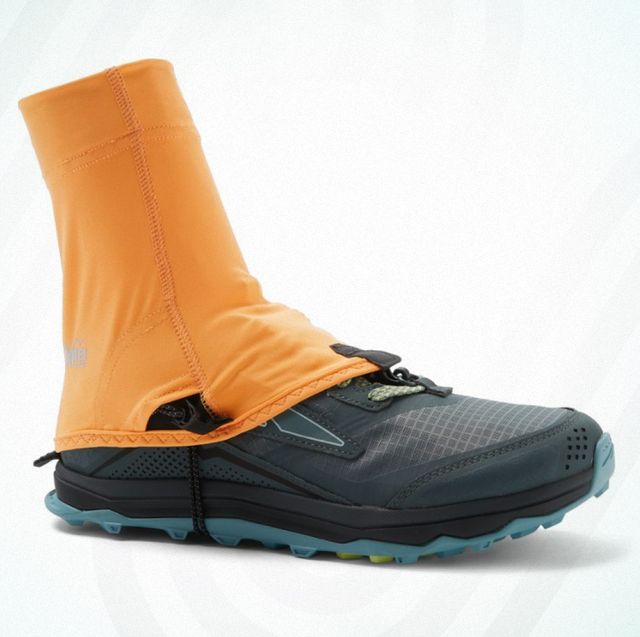Best for Casual Trails
Rocks, pine needles, and trail dirt won't slow you down when you have on these smart accessories.

Advertisement - Continue Reading Below. Why Trust Us?
Running gaiters (or trail gaiters) might be small, but they pack a major punch when it comes to keeping sand, dirt, dust, pine needles, and even pebbles out of your running shoes. Similar in theory to beefier winter gaiters, running gaiters are lightweight, stretchy pieces of fabric that cover the tops of your running shoes and secure around your ankle. The gaiters hook to your shoe and often secure underneath as well, creating a barrier that prevents annoying trail debris from getting in, helping save your feet and the inside of your shoe from abrasion. They weigh just a few ounces and are usually made of a nylon/spandex blend.
The Best Running Gaiters
What to Consider
Gaiter Intensity
As a rule, running gaiters are pretty straightforward, but within this category you can have a few options, depending on terrain and running preferences. The most simple gaiters are a piece of tubular, stretchy fabric that slides over your foot and secures to your shoe with a front hook or hook-and-loop in the back—sometime both. On the more technical side, you’ll have gaiters made of water-resistant material, those with full side closures for easy on-and-off, and models that feature greater adjustability. How deep you want to go depends on how much protection you need from trail debris or underbrush, and the longevity you’re looking for from your gear.
Closure
One of the main differences in gaiter styles is the closure. Some gaiters slide over your foot, and some are open, wrapping around your ankle with a full hook-and-loop or zipper side closure. The open gaiters can weigh a bit more, but they allow a more adjustable fit and are easier to get on and off. The gaiters that slide over your foot are more streamlined, and you won’t have to worry about getting dirt in the closure material, which compromises the effectiveness of the attachments. However, gaiters in this style can be a hassle to get on and off.
How We Selected
Running gaiters are fairly simple in terms of both design and materials, so we prioritized models with widely applicable uses and any special features. The main variations between models are their attachment points and design complexity, so we looked for gaiters with a wide range of weights, heights, and means/location of securing to your shoe. Some gaiters sit higher on the ankle, and some are best suited for wet or snowy trails. We also included styles at a variety of price points, and avoided models that don’t stay attached or require frequent adjustment.
For more great additions to your running wardrobe, check out our picks for the best arm sleeves, compression leg sleeves, and compression socks.
Maggie Slepian is a full-time freelance writer in the outdoor industry and has tested gear professionally for almost ten years—she is an avid backpacker, trail runner, bikepacker, and horseback rider and has thru-hiked thousands of miles on the Appalachian, Colorado, and Ouachita trails, along with backcountry travel on terrain including coastal trails, the desert, and high alpine peaks. Maggie has written for New York Magazine, Huffington Post, REI, and Outside. She is a columnist with Backpacker Magazine and is the co-founder of BackpackingRoutes.com. Contact her at MaggieSlepian.com.
Watch Next






















